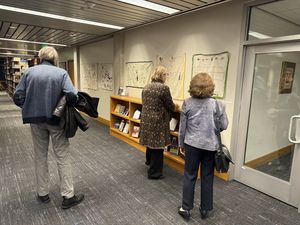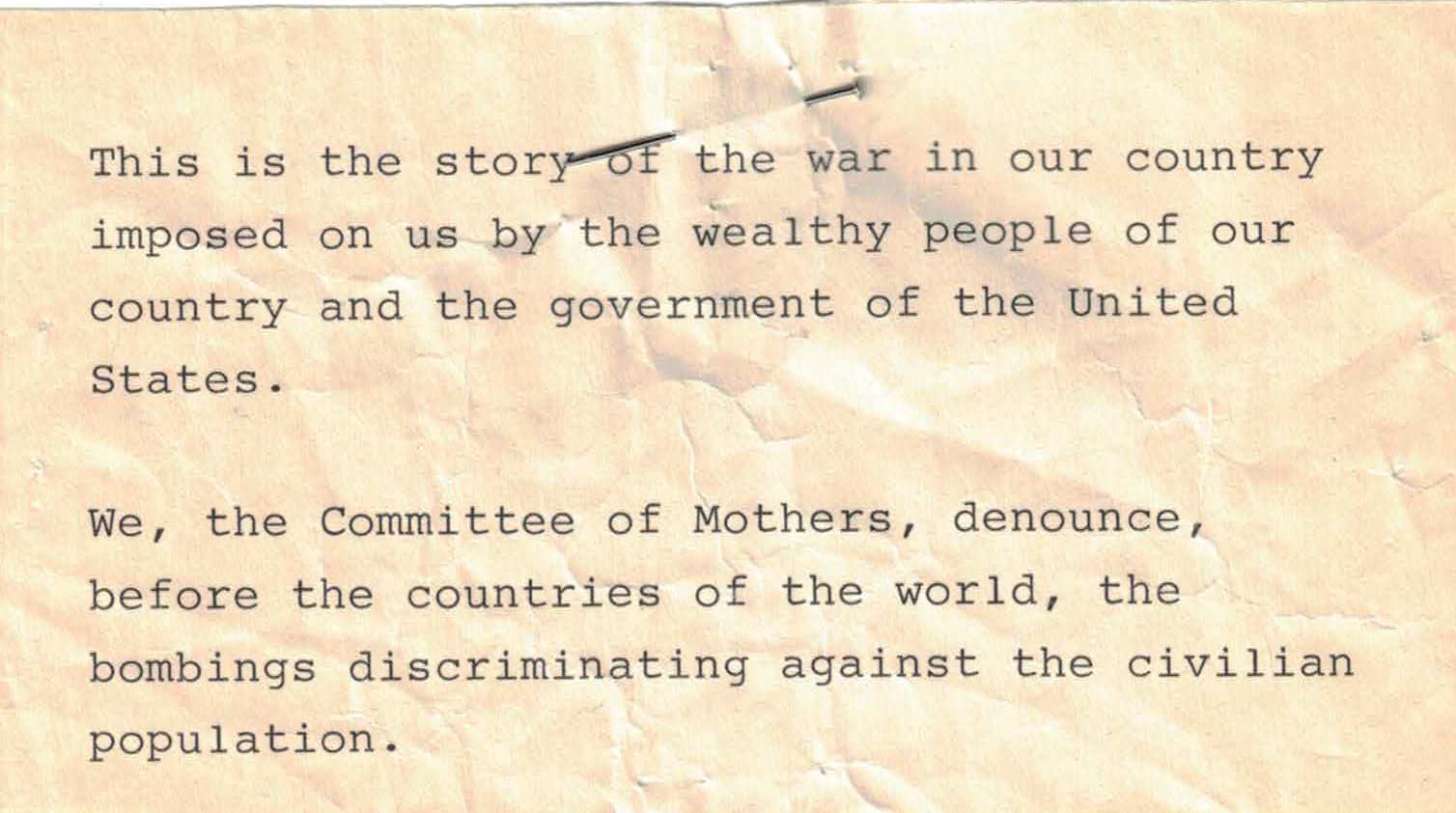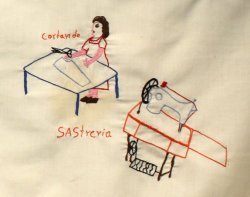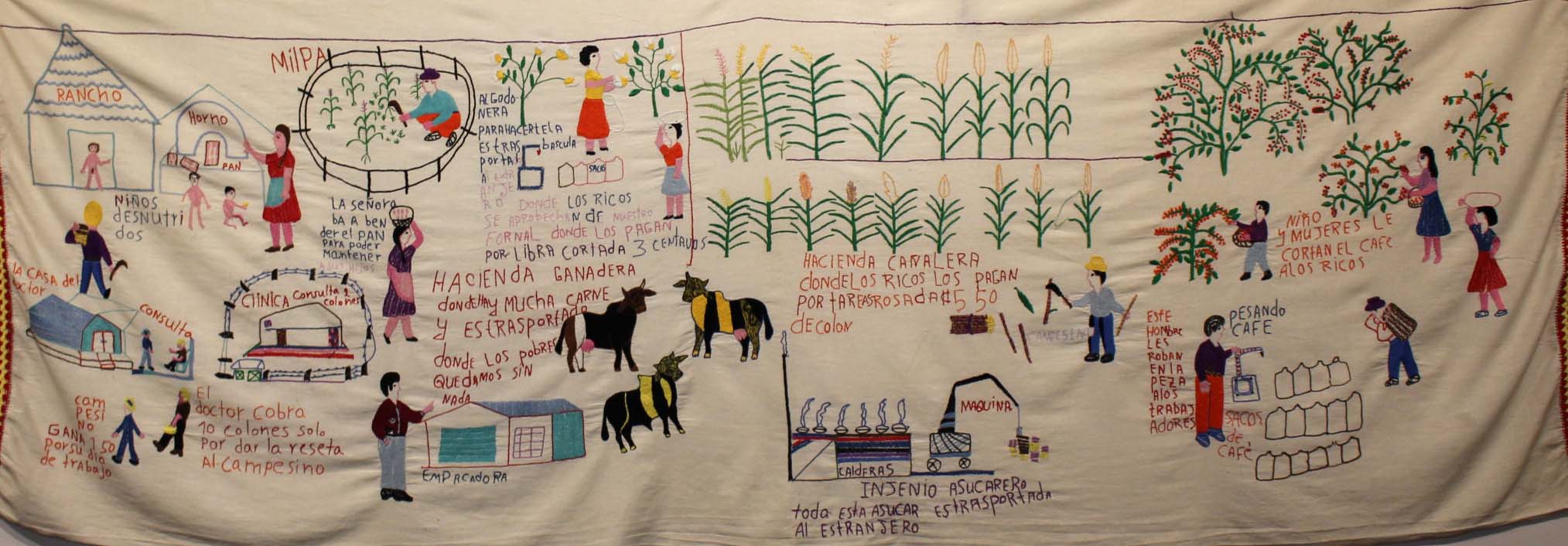
Threads of Resilience: Salvadoran Stories Sewn in Honduran Exile presents embroidered textiles made by Salvadoran refugees to tell the story of their displacement, their lives in the Mesa Grande refugee camp in Honduras, and their return to El Salvador.
Upon hearing that Father Gerardo Pöter, a German Dominican priest who worked in the camp from 1983-1984, would be touring the United States and discussing the refugee situation, women in the camp made these tapestries to assist him in telling their story.
The note below was attached to the description of the tapestries.

The tapestries are grouped as follows (not all of the 20+ tapestries are on display):
- Tell the cause of the civil war in El Salvador, which began in 1979 (see tapestry at bottom of page).
- Tell of the massacres of the peasants which have caused the refugees to flee their place of origin.
- Continuing the story of the refugees’ flight, telling the story of the flight itself, and continuation of the suffering in Honduras.
- Tell of the life of the refugees in Mesa Grande Camp.
 For the exhibition, the testimonies that accompany the embroideries were selected from “Unfinished Sentences: Addressing Human Rights in the Wake of Human Tragedy” (unfinishedsentences.org), an oral history project of the University of Washington Center for Human Rights. There is a similar exhibit of tapestries online at Latin American Digital Initiatives (https://ladi.lib.utexas.edu/en/mupi03).
For the exhibition, the testimonies that accompany the embroideries were selected from “Unfinished Sentences: Addressing Human Rights in the Wake of Human Tragedy” (unfinishedsentences.org), an oral history project of the University of Washington Center for Human Rights. There is a similar exhibit of tapestries online at Latin American Digital Initiatives (https://ladi.lib.utexas.edu/en/mupi03).
Peace arrived in El Salvador in 1992. The civil war is considered the last conflict of the Cold War. The United States government feared that El Salvador would become a communist state and provided training and munitions, which were often used against noncombatants.
Over 75,000 noncombatants were killed and an additional over 8,000 “disappeared.” Religious leaders and helpers were assassinated or brutally killed: Archbishop Óscar Romero, shot while saying Mass in 1980; numerous religious helpers including four Catholic women from America were raped and killed in 1980; and six Jesuit priests and their housekeepers were killed at the University of Central America in 1989.
Following the peace agreement, life continued to be difficult for those who remained and for those who returned from the camps and the countries that they emigrated to.
Upon the end of Father Pöter’s trip, he gave the tapestries to SHARE (Salvadoran Humanitarian Aid, Research and Education Foundation) in their Washington, D.C. office, which became part of their archival record.
SHARE Foundation (http://www.share-elsalvador.org/) played a significant role in organizing the interfaith community during the 12-year Civil War in El Salvador. According to SHARE, they worked closely with American Sanctuary Congregations and leaders, the Catholic church in the United States in close collaboration with the Archdiocese in San Salvador, the Lutheran Church in El Salvador and DIACONIA and Catholic Charities in Honduras. The foundation, which has its office in Berkeley, continues to support social justice and sustainable development for the people of El Salvador and Honduras.
The collection was donated to the Graduate Theological Union Archives in late 2020. It joins the Sanctuary collections that are among the collections that are most visited by researchers. For additional information, see here.
Click on image for larger version. The tapestry is 32 x 87 inches.
People at different countries, at different times and in different ways have used needlework to speak when their voices have been silenced, to speak for those who have lost through social and political upheaval. Women, especially those who are illiterate or living in poverty, have used sewing because it is the most accessible form available to them and used it as their voice.
Clare Hunter, Threads of Life: A History of the World Through the Eye of a Needle, 2019, 153-154.
Exhibition curated by the Center for the Arts & Religion.

